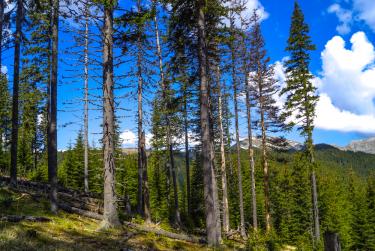What is a Current Use Program?
As a woodland owner, you know firsthand that forests hold great value. Your woods help clean the air, protect soil and water, and provide precious benefits and services—from food and habitat to renewable resources—for people and wildlife alike.
Current use programs help ensure that your land is valued according to those benefits and services when tax time rolls around. Property taxes are typically based on the land’s potential value—how much it would be worth if it were developed for commercial or residential use—and not how it’s used now. That can put a significant financial burden on landowners, and it can put forests at risk.
Many states offer current use programs, and the goal is the same from state to state: to help landowners keep their land undeveloped by calculating property tax according to how the land is currently used. But each state has its own set of rules and requirements for current use programs.
Some states require woodland owners to manage their land with a forest management plan. Some states also ask that landowners pay a stumpage (also known as the standing timber on your land) tax on the value of the timber they harvest while their property is in the program, or that they participate for a specific number of years.
Current use programs vary widely, and only you can decide if enrolling in a current use program is right for you. We’ll go over some of the current use basics to help you make an informed choice.
How can I get more tips?
It’s simple! Enter your email below.

